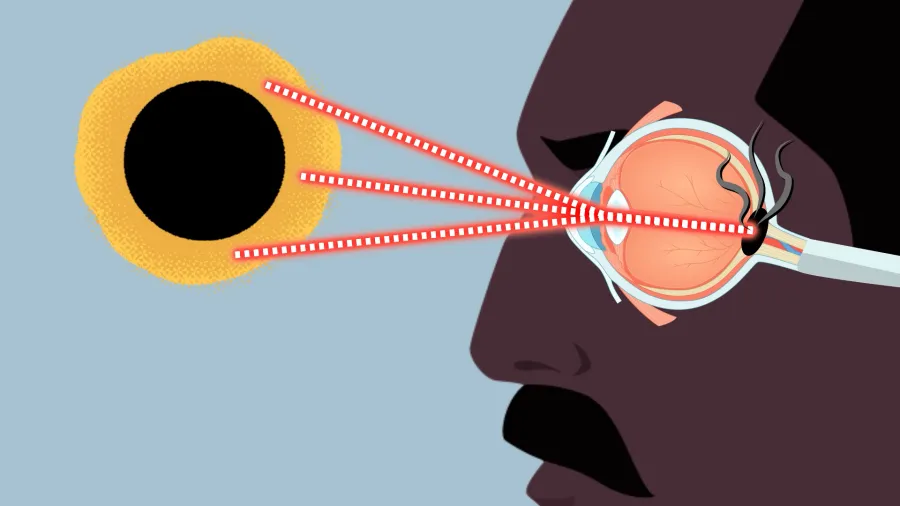
Here's How Solar Eclipses Actually Destroy Your Eyes
Share
During a solar eclipse, the sun's visible surface (photosphere) is mostly blocked by the moon. However, the sun's corona, a much fainter outer layer, remains visible. While the corona itself isn't inherently dangerous, staring directly at the sun, even during an eclipse, can damage your eyes due to intense invisible radiation. Here's a breakdown of the mechanisms at play:

-
Ultraviolet Radiation: The sun emits ultraviolet (UV) radiation, invisible to the naked eye. Overexposure to UV rays can damage the cornea, the outermost transparent layer of your eye, causing a condition called photokeratitis. Symptoms can feel like sunburn on your eye, including pain, gritty sensation, light sensitivity, and temporary vision loss.
-
Infrared Radiation: The sun also releases infrared (IR) radiation, another invisible type of light. While IR rays don't directly damage the cornea, they heat the internal tissues of the eye, particularly the retina, the light-sensitive layer at the back. Excessive heat can cause retinal burns, also known as solar retinopathy. This damage can be permanent and lead to central vision loss or blind spots.
-
Visible Light: Even the visible light emitted by the sun during an eclipse can be dangerous. The human eye isn't designed to handle such intense light levels. Focusing this light onto the retina for extended periods can damage light-receptor cells, causing temporary or even permanent vision problems.
Why our eyes aren't protected: Unlike skin, which can tan to protect itself from UV rays, our eyes lack such inherent defence mechanisms. The discomfort caused by looking directly at the sun doesn't provide a strong enough warning to prevent damage, as the effects of retinal burns can take hours or even days to become noticeable.
Safeguarding your eyes during a solar eclipse:
The only safe way to look directly at the sun is through specially designed solar filters. These filters dramatically reduce harmful UV and IR radiation while allowing a safe amount of visible light through. Regular sunglasses, even very dark ones, or homemade filters are not safe for viewing the sun.
You’ve come this far…
Why not venture a little further into A.S.S. - our exclusive Australian Space Society.
And keep thrusting Australia into the deep unknown…
#Space_Aus




